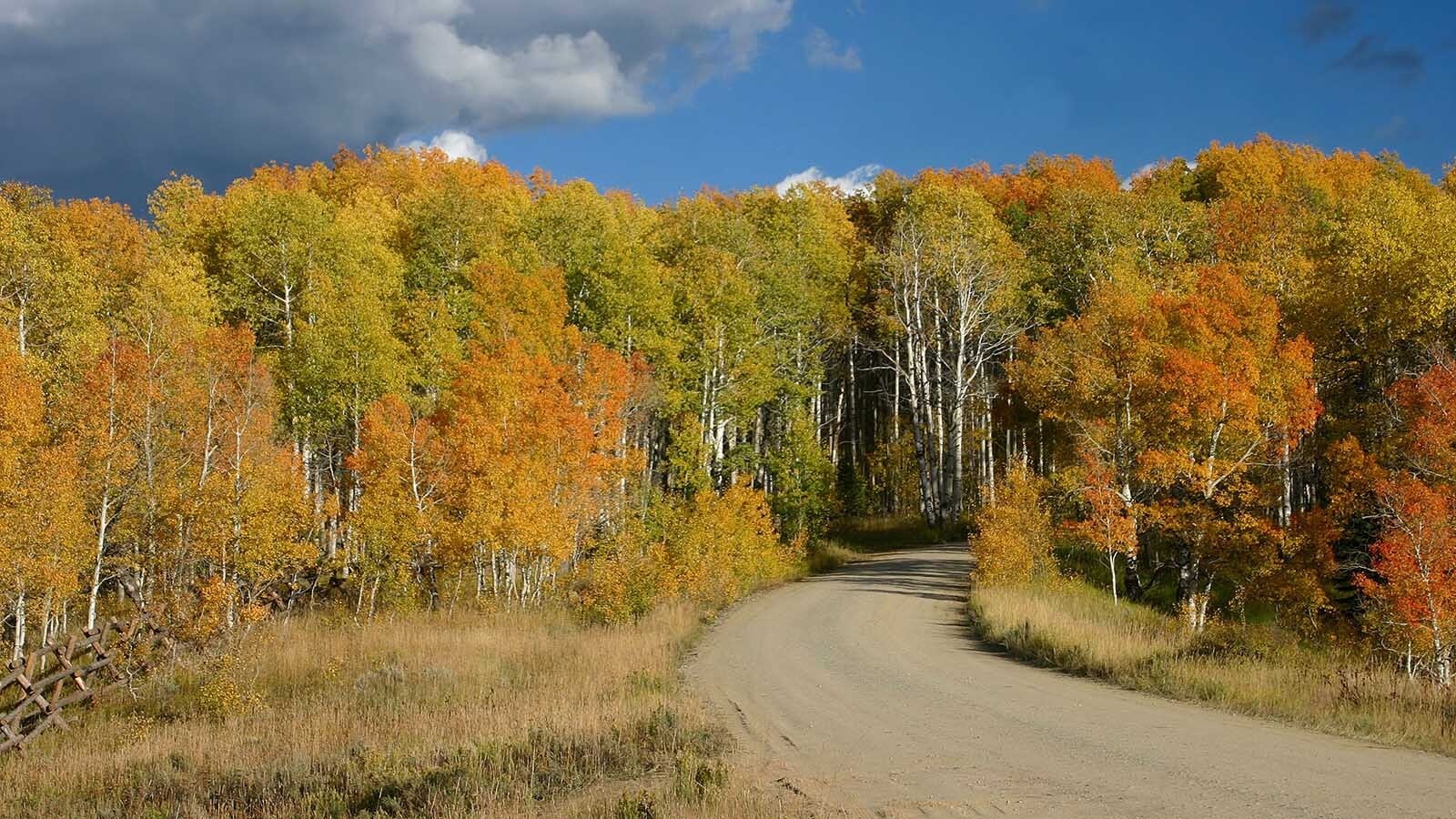Laura Terriere used to make an annual trip to southern Wyoming’s Sierra Madre Range every fall to see and photograph Aspen Alley, the perfectly picturesque grove of aspen trees growing on either side of a narrow private road near Encampment.
But the Casper resident has let that annual tradition lapse over the last several years. The reason? Aspen Alley just isn’t what it used to be.
“Most of the big, tall, old stand of trees have died off, and the new growth hasn’t replenished it yet,” Terriere told Cowboy State Daily. “I hear it is getting better, but now it’s just disappointing.”
She’s not the only lover of fall colors to notice the decline of Aspen Alley, and there are worrying signs that it might never regain its former luster.
Aging Aspens
Terriere’s not along in noticing the decline of Aspen Alley, which has been a concern for many since 2015.
Shane Smith, founder and director emeritus of the Cheyenne Botanic Gardens, sees the same disappointing signs in the aspen grove. But it’s not unexpected. Like anything else, the aspens of Aspen Alley are simply getting older.
“There were lots of very old aspens still standing, but a number of the trees had died out or were struggling,” he said. “My impression is that the trees are cycling through old age, and it's not near the show it used to be.”
The lifespan of quaking aspens is typically between 20 and 70 years, although that can be extended in ideal growing conditions. Several factors determine the health and longevity of an aspen grove, but Smith believes one of the most important factors is altitude.
“As you go further north, it gets cooler and aspens tend to be happier,” he said. “An aspen growing at a high elevation could reach 160 years, while low-elevation aspens tend to reach 50 to 60 years.”
The simplest reason for Aspen Alley's decline is that mature trees are reaching the end of their lifecycle. There also are concerns that the longevity of low-altitude aspens is getting shorter and more difficult.
Multi-State Struggle
Smith has observed several low-altitude aspen groves in the Rocky Mountain region. Everywhere he’s looked, he’s seen disconcerting signs of decline.
“I did a plane ride through the mountains of western Colorado, and it was obvious to me that the lower altitude aspens were struggling,” he said. “A lot of aspens that have been growing happily at lower altitudes in Colorado and Wyoming have been struggling and dying due to increased heat and drought, and many of the prettier aspen groves are kind of disappointing now.”
Aspen Alley sits at an elevation of roughly 8,200 feet on the southwestern side of the Sierra Madres. The trees grow best at elevations between 6,000 and 12,000 feet, putting Aspen Alley at the low end of their preferred range.
Smith’s concern is that the current climate conditions at lower elevations of the Sierra Madres are becoming more inhospitable for aspens. Higher temperatures and less precipitation could shorten the lifespan of the standing trees in Aspen Alley and impact the future of the new growth.
He’s not alone in his observations about aspens. The U.S. Forest Service has been monitoring a “noticeable” decline in aspens across the Western states and Canada since at least 2007.
Furthermore, aspen groves aren’t a collection of individual trees, but colonies of clones growing from the same root system. This makes aspens more susceptible to drought, disease, invasive insects and modern agricultural practices since what’s bad for one is usually bad for the entire grove.
Gold Standard
The good news for Aspen Alley is that new sprouts are poking through, a sign of a healthy aspen grove. Quaking aspens grow fast, between 2 and 5 feet a year, and can reach heights of up to 80 feet, though they tend to average out to about 50 feet.
“There was a lot of younger trees coming up on the lower part of the canopy,” Smith said. “They'll eventually take the place of the current aspens, assuming nothing else affects the situation.”
Terriere plans to return to the Sierra Madres this fall and make her first visit to Aspen Alley in several years. She’s found new places for fabulous fall colors in Wyoming, but nothing matches the unique aesthetic of Aspen Alley.
“At its peak, with sky-high, yellow and gold aspen trees in the fall and the canopy over the dirt road, Aspen Alley is so majestic,” she said. “My husband and I are going to catch some good fall colors, and we’re making a point to go by Aspen Alley.”
There’s a future for Aspen Alley, even if it’ll take several more years for its golden grandeur to fully return. Terriere is cautiously optimistic it will, but she won’t be breathlessly waiting to find out.
“My fellow photographers say it’s recovering, and I hear there’s a lot of new growth,” she said. “But how long is it going to take those aspens to recover? That’s why you have to get out in the woods and find something else. But we’re making a point of going to Aspen Alley this year. Even when it’s disappointing, it’s still fantastic.”
Andrew Rossi can be reached at arossi@cowboystatedaily.com.











